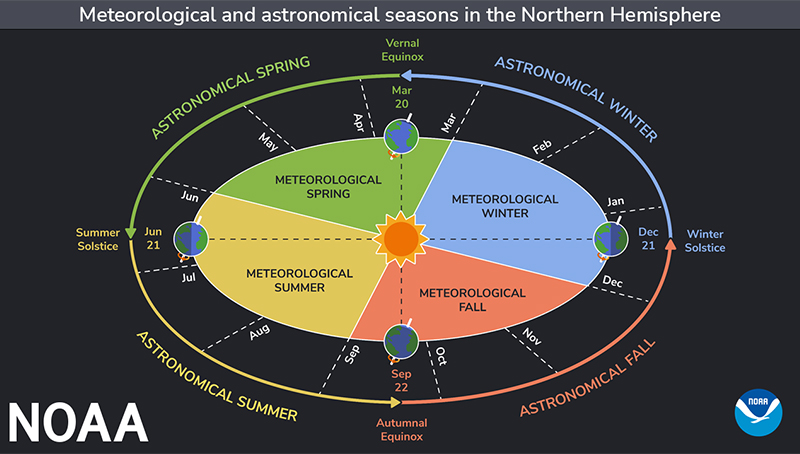
As the warm days of summer begin to wane, you might find yourself wondering when the season officially ends. Interestingly, the answer can vary depending on which calendar you reference: the astronomical calendar or the meteorological calendar. Both methods offer different perspectives on the end of summer and the beginning of autumn. Let’s dive into each one and explore their significance.
Astronomical Calendar: Marking the Equinox
The astronomical calendar is based on the Earth’s position relative to the Sun. According to this method, the end of summer is marked by the autumnal equinox, which typically occurs around September 22 or 23 in the Northern Hemisphere. This event is when the Sun crosses the celestial equator, resulting in day and night being approximately equal in length.
The exact date of the autumnal equinox can vary slightly each year due to the Earth’s elliptical orbit around the Sun. Many cultures around the world reference the astronomical calendar for the official change of seasons, aligning significant events and festivals, such as harvest festivals, with the equinox.

Meteorological Calendar: Simplifying Seasons
Meteorologists, on the other hand, use a different approach to defining seasons. The meteorological calendar divides the year into four seasons of three months each, making it easier for statistical analysis and comparison. According to this method, summer ends on August 31, and autumn begins on September 1.
This method is based on the annual temperature cycle and aligns more closely with the Gregorian calendar. For practical purposes, such as agriculture, commerce, and daily life, the meteorological calendar’s consistent, three-month periods are more convenient and predictable.
Cultural and Practical Applications
In many cultures, the astronomical calendar is often referenced for the official change of seasons. Festivals, rituals, and other cultural events are frequently tied to the timing of the equinoxes and solstices. For example, harvest festivals, which celebrate the bounty of the season, are often aligned with the autumnal equinox.
The meteorological calendar, however, provides a more practical framework for everyday activities. By dividing the year into regular, predictable periods, this method is particularly useful for planning agricultural activities, commercial ventures, and even scheduling maintenance work.
Implications for HVAC Professionals
For HVAC professionals, understanding both the astronomical and meteorological calendars can be highly beneficial. The meteorological calendar is useful for planning maintenance schedules and preparing for seasonal changes in temperature. Knowing that autumn starts on September 1 allows HVAC technicians to schedule end-of-summer maintenance and ensure heating systems are ready for the cooler months ahead.
The astronomical calendar can be important for understanding longer-term climate patterns and planning for significant shifts in weather. This knowledge helps HVAC professionals anticipate changes that may affect heating and cooling demands.
Whether you follow the astronomical calendar or the meteorological calendar, understanding the different ways to determine the end of summer can enrich your appreciation of the changing seasons. For HVAC professionals, this knowledge is particularly valuable, as it aids in planning and preparing for the seasonal transitions that impact their work.
As summer comes to a close, take a moment to appreciate the science and tradition behind these calendars. Whether you’re marking the autumnal equinox or the start of September, the end of summer is a reminder of nature’s ever-changing cycle and our efforts to adapt and thrive within it.

